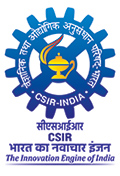Identifying the Causes for Crack Development in Billets and Rounds during Hot Rolling of VSP
Objectives
- Identification of possible reasons for cracking phenomenon in blooms and billets after hot rolling by investigation and analysis of samples from different process stages.
Technical Details
- Evolution of surface cracks in long steel products is one of the critical problems in steel making industries. The long products (hot rolled billets, bars and rods) that are made through continuous casting route and subsequently thermo-mechanical processing, were seemingly inconsistent to meet their quality.
- The surface cracks are mainly revealed during inspection after the final stage of hot rolling at steel producers end or before forging at customers’ site. Moreover, subsurface cracks which are present in steel billets may evolve after forging at customer’s site. This leads to subsequent rejection of steel billets.
- Methodology adopted areas; (i) analysis of operational data at various stages of product development. (ii) non-destructive evaluation of the samples (iii) structural & compositional analysis of the analysis of the samples (iv) mechanical property evaluation (v) forging and rolling simulation (vi) data driven parametric analysis and thermodynamic study.
Achievement (Output/outcome)
- Most of the steel grades qualify the standards in terms of chemical compositions and mechanical properties.
- Inclusion rating was found to be on the higher side compared to the standards.
- The surface cracks in billets mostly followed the longitudinal direction of rolling and the depth of penetration of these defects is observed to be within 2mm.
- However, in some cases, extensive penetrations of cracks are also observed.
- Cracked billets show the presence of Al2O3 and FeO combined inclusions that are dominated either by Al2O3 or FeO. This indicates improper secondary steel making practices as well as inefficient removal of scales during descaling process.
- The presence of clusters of alumina in bloom and alumina dominating oxide inclusions in billets indicates towards excess addition of Al in the steel bath, improper oxide flotation and removal of oxides from liquid steel.
- The excessive amount of inclusions, including FeO, may also be due to the high turbulence in the mould that may lead to mould powder entrapment as well as re-oxidation of liquid steel.
- The presence of Si, Ca and Na traces in most of the alumina dominating oxide inclusions can be attributed to excess addition of mould powder during casting.
- Ultrasonic C-scan data reveals casting defects.
- As per data analysis, it has been found that the mould powder consumption rate is considerably higher than the stipulated literature information. Oscillation mark depth exceeds the recommended value of 0.6 mm for several heats.
Impact
- Alumina seems to be one of the major culprit for crack formation. An optimization is required for Al addition and alumina removal during secondary liquid processing. Extra precaution is also required in terms of amount of alloy additions, liquid temperature and mixing time, particularly in view of the presence of pure Si particles.
- The presence of traces of Na and Ca, in particular, in blooms as well as in billets warrants stricter control on mould powder consumption as well as mould turbulence. This observation has also been supported by the analysis on plant data.
- Overall steel cleanliness needs improvement, which can be accomplished by controlling slag carry over during tapping and installing tundish flow control devices.
- Addition of a well designed slag former may be one of the solutions to capture alumina based inclusions from the liquid steel.
- Entrapment of chunks of iron oxides suggests improper descaling practice that needs improvement, e.g. installing metallic brushes and also secondary descaler.
- Presence of strained surface and folding/laps observed in some of the billets also demands proper attention on rolling parameters.

Micrographs reveal the formation of crack branches from the main crack (EPMA analysis)






